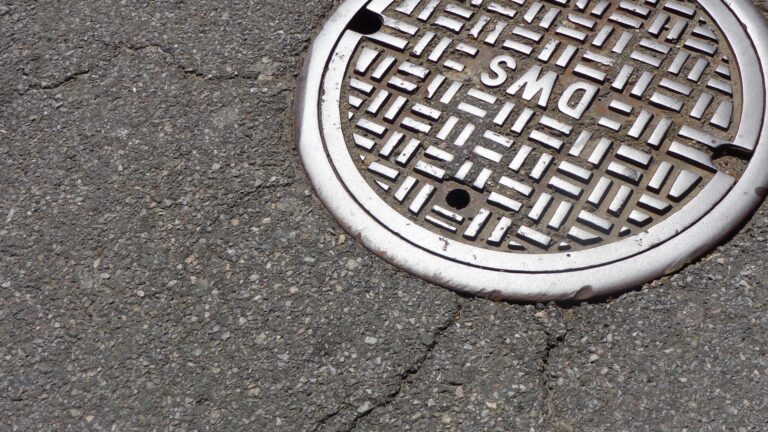Scientists already know that some microbes are electroactive — they produce electricity when breaking down substances for energy.Some of these microbes have recently been shown to sprout little electricity-conducting wires. These ferry the electricity away to be dissipated, which enables the bugs to keep producing it. The wires therefore act as a kind of snorkel, allowing the bacteria to penetrate further into sediment where they can use this electrochemical process to survive where there is no oxygen.Now some of these snorkelling electro-bugs have turned up in large numbers, to scientists’ surprise, in an experiment to accelerate the processing of sewage waste. What’s more they, and other electroactive bugs, have the capacity to more than quadruple the breakdown rate of the sewage compared with current methods.The scientists belong to the iMETland consortium which is trying to improve on the tested technology of engineered wetlands – areas of land that are designed to treat wastewater. Small communities worldwide deal with the problem of wastewater by pumping it into such constructed wetlands, filled with a medium such as gravel, where bugs digest the waste, often abetted by plants that grow on the top and provide some oxygen and other services.As populations grow, the current form of constructed wetlands would need to take up more valuable land space to deal with the increased waste. The solution, according to iMETland, is to harness electroactive bugs. The team reasoned that if they replaced gravel with a substance that could conduct electricity, electroactive bugs that are naturally in the sewage in low concentrations would proliferate. The conductor would whisk away electrons produced by the bugs and, with this bottleneck eliminated, they would keep digesting at a terrific rate.The iMETland project is a consortium of 11 EU partners led by the Spanish research institute IMDEA Water. The project coordinator, Professor Abraham Esteve Núñez, from IMDEA Water and the University of Alcalá de Henares in Madrid, Spain, set up some pilot-scale versions of their proposed constructed wetlands, in separate, Spanish-funded experiments.Pyrolysed carbon – heated in an oven to very high temperatures in the absence of oxygen, which makes it electrically conductive – also known as coke, replaced the gravel.Faster processingAs the team gradually loaded both gravel-based and coke-based experiments with more and more sewage they found that the coke bed systems responded by working faster, while the gravel-based systems became less efficient.A load that took the gravel-based system three and a half days to process could be processed by the coke-filled system in half a day.The scientists found that far more bugs in the coke system were electroactive than in the gravel beds. And amongst these they found bugs such asGeobacterand someDesulfobulbusspecies that are also preoccupying other research groups because of those conductive wires.“‘We are working with natural systems: bugs are a little bit stubborn.’Dr Carlos Alberto Arias, Aarhus University, Denmark‘The presence ofDesulfobulbusis especially relevant due to its fascinating capacity for generating electrically conductive microbial filaments,’ the group reported in a Royal Society of Chemistry journal in September, adding that they have even discovered microbes there that have recently been shown to link with each other together to form longer, living electrical cables that allow them to penetrate even deeper into oxygen-free areas.It turns out that evolutionary selection gets to work in the new, conducting environment and favours bugs that can exploit the electrochemical possibilities.Funded by the EU, iMETlands are now building the wetlands in Denmark, Spain, Mexico and Argentina, to test how they function in different environments.‘We are working with natural systems: bugs are a little bit stubborn,’ said Dr Carlos Alberto Arias, senior researcher in the Department of Bioscience at Aarhus University in Denmark.Although the coke can be up to ten times more costly than gravel, the economics still work favourably because the wastewater is purified at faster rates than those of classical constructed wetlands and thus the land space required is greatly reduced, says Dr Arias. And the research team is generating cheaper alternatives to coke.GardenThe new iMETlands zones ‘are beautiful’, said Dr Arias. ‘What you have is a garden.’There are no odours or mosquitoes since no water is exposed to the air; and plants grow from the surface, oftenPhragmites australis, producing flowers in the spring.Dr Arias says the team is also exploring the wetlands for processing pharmaceuticals and pesticides by nurturing electroactive bacteria that can break down the antibiotics and hormones that turn up in normal urban wastewater, as well as high concentrations of antibiotics that can emerge from farms. They have also managed to accelerate the clean-up of soils polluted with various pesticides and herbicides.At Lindhurst Innovation Engineers, in the UK, a similar enthusiasm for electroactive microbes could ameliorate the troubles of Europe’s 270 000 small and micro food and drink industries, which face soaring costs for effluent disposal.Lindhurst, too, is working with a familiar waste process — in this case anaerobic digestion, in which bugs deprived of oxygen guzzle the waste to produce a useful hydrogen and methane-rich biogas. They have supercharged this process by turning it into a microbial fuel cell as well, by adding electrodes and electroactive bacteria.The resulting system — H2AD, which was funded by the EU through its funding for small- and medium-sized enterprises — has reduced the time taken to turn a given amount of waste to biogas from 20 days to between three and five days. What’s more, the system requires less energy and removes more organic matter than anaerobic digestion on its own.‘It makes the reaction faster and more efficient,’ said Dr Laura Porcu, the company’s head of research and development. ‘It has huge potential.’The resulting trickle of electricity produced by the bacteria is, again, used for monitoring the system. ‘If the current is picking up, the bacteria are happy and it is a good sign that the system is working efficiently,’ said Dr Porcu.The company is now commissioning and testing five plants to see how the system works for a variety of food wastes — brewery, agricultural, ice cream, slurry manure, and a mixture of onion and potato waste.
This article was originally published in Horizon, the EU Research and Innovation magazine.
Add to favorites:
Share:
Listing Description
Video
Documents
No documents available.
Ask KETMarket to make a contact
Connect with the Listing Owner!
💬 Please log in now to askKETMarket to make a contact. Not a member yet? Sign up for free and start connecting today!
Video
Related Funding and Finance Opportunities
Unlock Exclusive Funding Opportunities!
🔑 Get instant access to tailored funding opportunities that perfectly match your needs. This powerful feature is exclusively available to our premium members—helping you save time, stay ahead of the competition, and secure the right funding faster.
Upgrade to Premium now and never miss an important opportunity again! Already a premium member? Log in here to explore your matches.
Related Innovation Offers
Discover Tailored Innovation Offers!
🚀 Gain access to technology solutions that match your specific needs and interests—carefully selected to support your innovation goals. These offers are exclusively available to our premium members, helping you identify relevant technologies faster and start the right conversations with potential partners.
Upgrade to Premium now and explore your personalized technology matches today! Already a premium member? Log in here to view your tailored offers.
Related Knowledgeable Resources
Discover More with Premium: Related Knowledge Resources
🔒 You’re missing out on expert-curated knowledge specifically matched to this topic. As a Premium member, you gain exclusive access to in-depth articles, guides, and insights that help you make smarter decisions, faster.
Whether you’re preparing a funding proposal, researching a new market, or just need reliable information—our Premium knowledge matches save you hours of research and point you directly to what matters.
Upgrade to Premium now and instantly unlock relevant knowledge tailored to your needs! Already a member? Log in here to view your personalized content.

